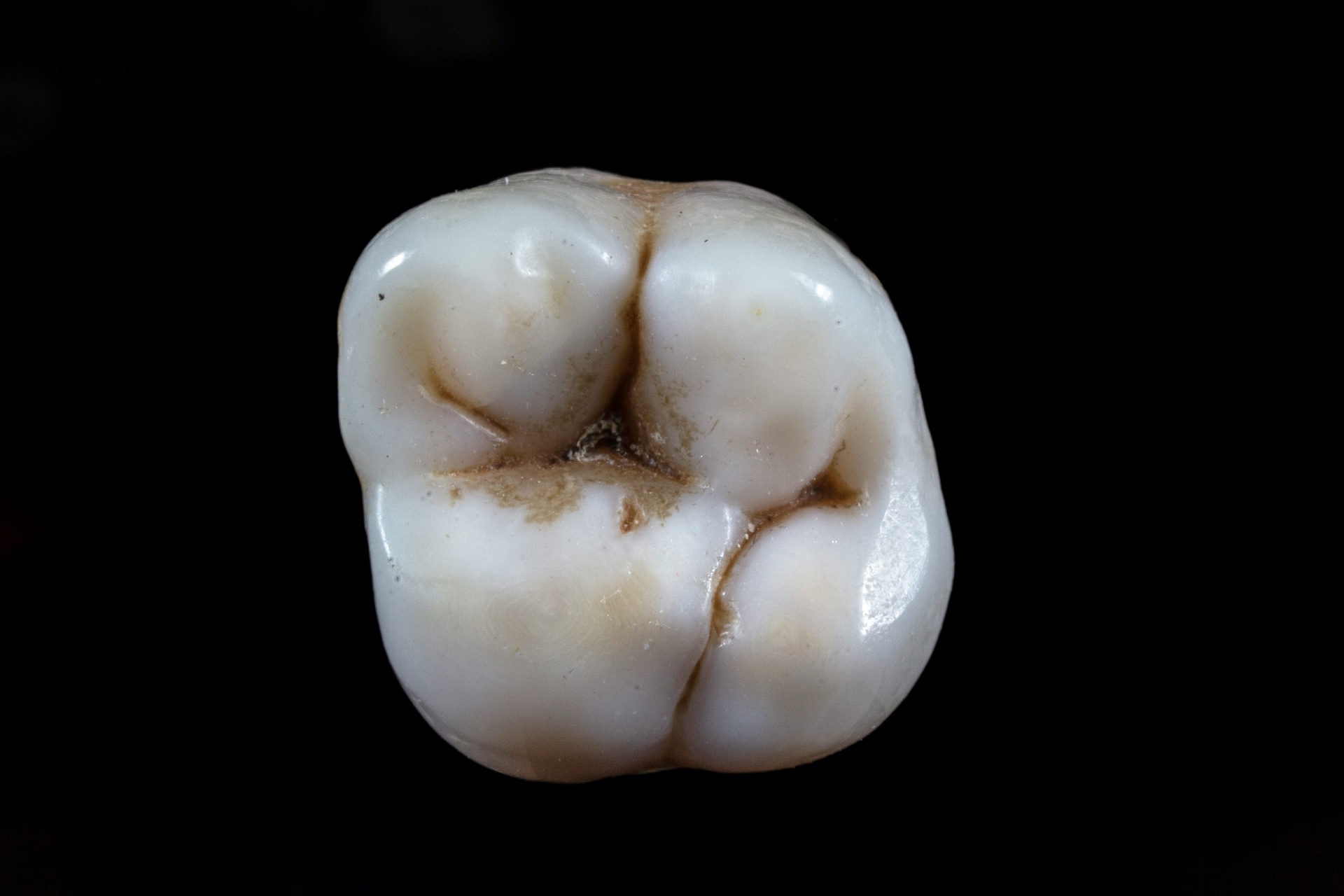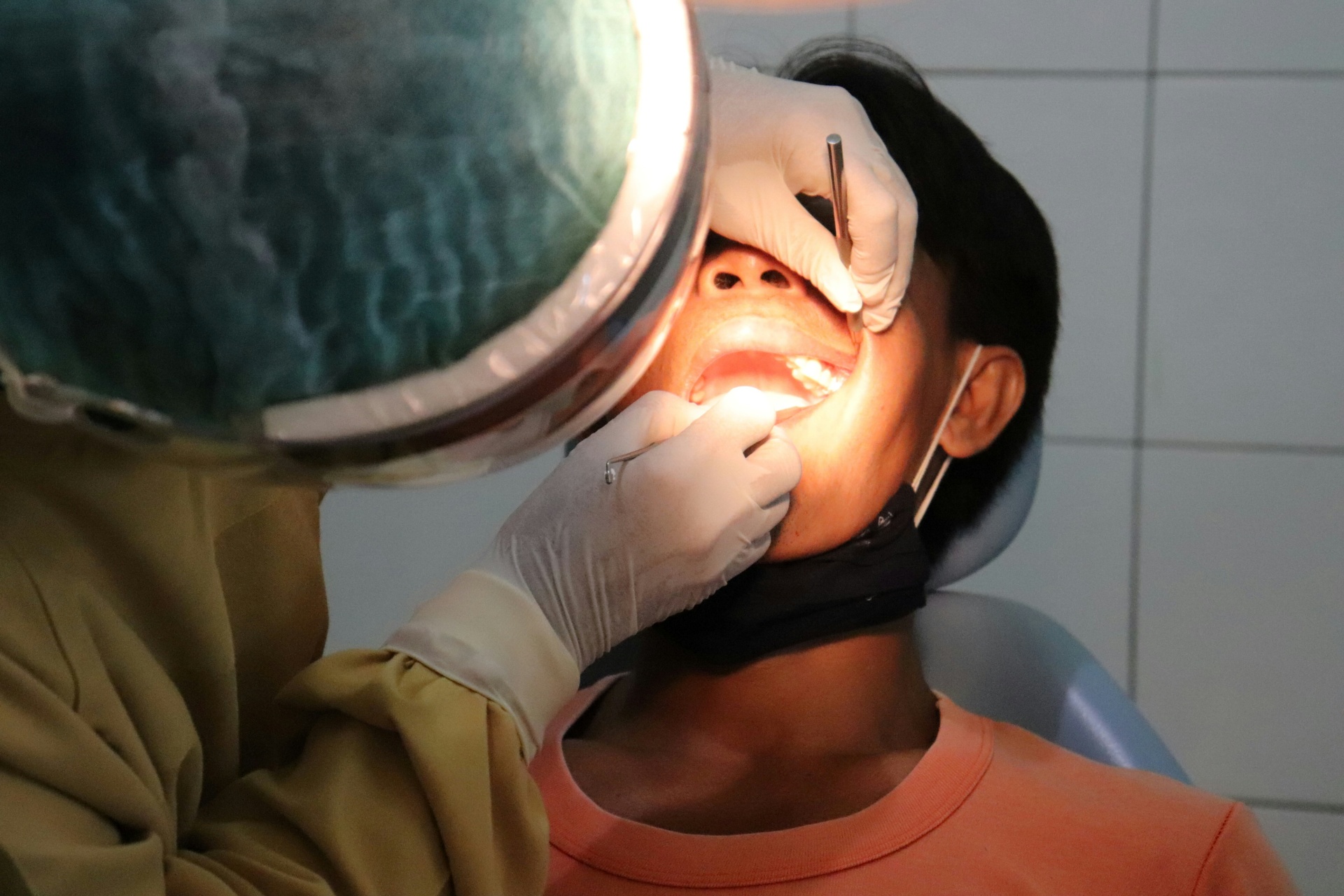
While fillings are meant to treat decay, they’re not meant to protect your teeth forever. Just like your natural teeth, fillings still get worn down, develop gaps, and let bacteria sneak in. These scenarios happen more often than most people think.
The good news? It’s treatable. And if you catch it early, your dental provider can easily remedy your situation. In this guide, we’ll explain why cavities can come back, how dentists repair them, and what you can do about it.
Can You Get a Cavity in a Filling
Yes, you can—and it’s one of the more common reasons people return to the dentist after a previous filling. Even though a filling replaces decayed tooth structure, the natural tooth around it is still vulnerable to bacteria, especially if your oral hygiene slips or the filling starts to break.
How Cavities Form Around Fillings
 Bacteria can get trapped along the edge or underneath an old or damaged filling. Once that happens, the area becomes harder to clean effectively. Over time, decay can slowly form again—this time around or beneath the existing dental work.
Bacteria can get trapped along the edge or underneath an old or damaged filling. Once that happens, the area becomes harder to clean effectively. Over time, decay can slowly form again—this time around or beneath the existing dental work.
This can happen with both small tooth fillings and larger ones, particularly if the filling was placed years ago. You’re also more likely to see this happen with back tooth cavity fillings, since those take more pressure from chewing and are often harder to brush thoroughly.
A cavity on a filled tooth doesn’t mean something went wrong—it just means that teeth, like anything else, need maintenance over time.
Why Fillings Fail (and What to Watch For)
Even a well-placed filling can wear down over time. Daily chewing, changes in bite pressure, and natural aging can all cause tiny gaps to form between the filling and the surrounding tooth. Once bacteria find their way into those spaces, decay can return—and this time, it may be hidden beneath the surface.
You’re especially likely to notice issues with a back tooth cavity filling, since molars take on most of the chewing force. These teeth are also harder to clean thoroughly, making them more prone to reinfection.
Warning Signs Your Filling Might Be Failing
Even a small tooth filling can fail quietly, which is why it’s important to schedule regular checkups and teeth cleanings. If left untreated, what started as a small issue can turn into a larger repair—or even lead to a crown or root canal. Here are a few red flags to watch for:
- A sharp or lingering pain when biting or chewing
- Sensitivity to cold, heat, or sweets
- A dark spot, crack, or visible hole in or around the filled area
- Food getting stuck near the filling more often than usual
How Dentists Repair Cavities on Filled Teeth
If your dentist finds decay around or under an old filling, they’ll assess how deep the damage is. In many cases, the solution is simple: remove the old filling, clean out the cavity, and apply a new filling. This type of dental cavity repair is routine and often takes less than an hour.
For small areas of decay, especially near the surface, a tooth hole filler—typically a composite material—can be used to patch the area with minimal drilling. These materials are designed to bond directly to the tooth and blend in naturally with your smile.
If the damage is more extensive or the remaining tooth structure is too weak, your dentist may recommend a full crown instead of a second filling. This offers more strength and protection for the tooth in the long term.
Preventing New Cavities (Even on Filled Teeth)
The best way to avoid getting another cavity on a filled tooth is by sticking to the basics: brush twice a day with fluoride toothpaste, floss daily, and limit sugary snacks and drinks. But even with great habits at home, professional care still matters.
Why Dental Cleanings Are Important To Preserving Fillings
 Regular dental cleaning appointments allow your dentist or hygienist to spot early signs of wear, breakdown, or decay—often before you notice anything wrong. During these cleanings, they can also smooth out rough edges around older fillings and make sure no food is getting trapped in areas that are hard to clean.
Regular dental cleaning appointments allow your dentist or hygienist to spot early signs of wear, breakdown, or decay—often before you notice anything wrong. During these cleanings, they can also smooth out rough edges around older fillings and make sure no food is getting trapped in areas that are hard to clean.
By catching issues early, you can avoid the need for more involved treatments and keep your existing fillings working as they should.
How Much Does It Cost to Fix a Cavity on a Filled Tooth?
The cost of addressing a cavity on a previously filled tooth can vary based on several factors, including the extent of the decay, the type of filling material used, and your location. Here’s a general breakdown:
Dental Filling Costs
Dental filling costs vary from state to state. It’s important to note that these are average estimates and may not include any necessary prep work, such as exams or teeth cleaning costs. If the decay is extensive and a crown is required, the total cost will be higher.
- Silver Amalgam Fillings (Permanent Teeth):
- 1 surface: $101.78 (average), up to $119.57
- 2 surfaces: $111.36 (average), up to $138.05
- 3 surfaces: $127.78 (average), up to $153.10
- 4+ surfaces: $134.62 (average), up to $163.36
- Composite (Tooth-Colored) Fillings: Typically range from $90 to $250 for one to two teeth.
- Gold Fillings: Range from $250 to $4,500, depending on the size of the filling and current gold prices.
Teeth Cleaning Costs in Washington
Professional teeth cleanings are often the first line of defense in preventing repeat cavities—especially around older fillings. In Washington State, the average cost for a routine dental cleaning (without insurance) typically falls between $100 and $200. For deeper cleanings, such as scaling and root planing for gum disease, the cost can rise to $150 to $300+.
Additional Costs to Consider When Repairing Tooth Fillings
While the cost of the filling itself is important, there are a few other factors that might affect the final bill. Here are some additional things to keep in mind when budgeting for dental work—especially if you’re dealing with a previously filled tooth.
Dental Insurance
Many dental insurance plans cover a portion of the cost for fillings, especially if the procedure is considered medically necessary. Preventive care, like cleanings and exams, is often fully covered.
Dental Schools
Institutions like the University of Washington School of Dentistry offer services at reduced rates. Treatments are performed by students under the supervision of licensed professionals—making it a more budget-friendly option.
Payment Plans
If you don’t have insurance, ask your dental office about in-house financing or membership plans. Many clinics now offer flexible payment options that break up the cost of treatment over time.
Investing in Your Oral Health with btyDENTAL WA
At btyDENTAL WA, we understand that addressing dental issues promptly is crucial for maintaining optimal oral health. Our team is dedicated to providing top-quality dental care, ensuring that treatments like fillings are both effective and aesthetically pleasing. While specific pricing for dental fillings isn’t listed on our website, we encourage you to contact our office directly for detailed information.
Why Choose btyDENTAL WA?
- Comprehensive Care: From routine cleanings to advanced procedures, we offer a full spectrum of dental services to meet your needs.
- Patient-Centered Approach: Your comfort and satisfaction are our top priorities. We take the time to discuss treatment options and answer any questions you may have.
- State-of-the-Art Technology: Utilizing the latest dental technologies, we ensure precise diagnostics and effective treatments.
Don’t wait until minor dental issues become major problems. Contact btyDENTAL WA to schedule your dental cleaning or consultation. Schedule your teeth filling appointment today!

